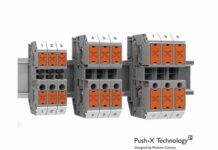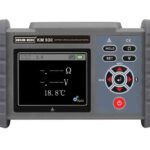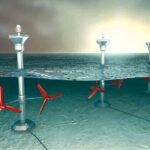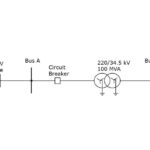
Data centres are vital infrastructure, powering everything from social media and streaming services to healthcare, energy, and government systems. Their continuous operation is essential, yet one of the most overlooked risks is lightning strikes and electrical surges. These events can lead to fires, system outages, and data loss. DEHN, a global leader in electrical protection, advocates for a comprehensive, standards-based strategy to protect data centres. By implementing a coordinated lightning and surge protection system, organisations can ensure resilience and maintain uninterrupted service.
The Importance of Protection
Modern data centers are intricate networks of electrical and electronic systems. Because their continuous operation is critical, any disruption can lead to widespread issues. Lightning strikes and electrical surges present significant risks, particularly to the sensitive equipment within. Therefore, it’s crucial to integrate a strong protection strategy from the very beginning of the planning phase to ensure both cost-effectiveness and efficiency.
Normative Framework and Risk Assessment
At the heart of any effective protection strategy is adherence to international standards. The primary standards referenced for data center protection include:
- EN 50600: This standard dictates the planning, construction, and operation of data centers.
- EN 62305: A comprehensive, four-part standard that covers general principles, risk management, physical damage protection, and safeguarding internal systems from Lightning Electromagnetic Pulses (LEMP).
- IEC 60364 and EN 50174: These standards address installation practices and protection against transient overvoltages.
The process kicks off with a thorough risk assessment conducted in accordance with EN 62305-2. This assessment evaluates the probability and potential consequences of lightning strikes, which then guides the selection of the appropriate Lightning Protection Levels (LPL I–IV). This analysis is crucial for determining if protection is legally mandated and what measures are most economically and technically sound.
External Lightning Protection System (LPS)
A fully integrated LPS consists of the following components:
- Air-Termination System – Captures direct lightning strikes.
- Down Conductors – Safely conduct the lightning current to the ground.
- Earthing System – Disperses the current into the earth to minimize risk.
- Separation Distance – Maintains safe spacing to prevent dangerous flashovers between conductive parts.
- Lightning Equipotential Bonding – Balances potential differences to avoid internal arcing.
In data centres—particularly those with rooftop equipment such as HVAC units or solar (PV) panels—maintaining proper separation distances can be complex. To address this, DEHN recommends using HVI (High-Voltage Insulated) Conductors, which simplify installation while ensuring the safe discharge of lightning currents without the risk of flashover.
Earthing and Equipotential Bonding
The earthing system is the bedrock of any robust protection strategy. It serves a dual purpose: grounding lightning currents and facilitating equipotential bonding and shielding. Typically, a ring earth electrode with a 5×5 meter mesh is installed beneath the data center. This mesh is then connected to the building’s reinforcement at one-meter intervals, creating a low-impedance network. This setup is crucial for minimizing electromagnetic interference and ensuring safe current distribution throughout the facility.

Shielding and LEMP Protection
Lightning strikes produce intense electromagnetic pulses (LEMPs) that can induce harmful voltages in nearby conductors. To protect against these effects, several mitigation strategies are employed:
- Structural Shielding: Metal reinforcements or mesh mats are integrated into the building structure to help absorb and redirect electromagnetic energy.
- Spatial Shielding: Critical areas such as server rooms may be enclosed within Faraday cages to block external electromagnetic fields.
- Simulation Tools: Advanced software is used during the planning phase to model electromagnetic fields and optimize the effectiveness of shielding measures.
To preserve the integrity of the protective envelope, particular attention must be given to shielding or minimizing vulnerabilities such as windows, doors, and cable entry points.
Lightning Protection Zone (LPZ) Concept
EN 62305-4 introduces the LPZ concept, which divides the data centre into zones based on exposure to lightning effects:
- LPZ 0A: Direct exposure to lightning strikes.
- LPZ 0B: Shielded from direct strikes but exposed to electromagnetic fields.
- LPZ 1–n: Increasingly shielded zones with progressively lower electromagnetic exposure.
At each zone boundary, Surge Protective Devices (SPDs) are installed to limit transient voltages. These include:
- Type 1 SPDs: For lightning current at building entry points.
- Type 2 SPDs: For sub-distribution boards.
- Type 3 SPDs: For terminal devices.
Proper coordination between these devices ensures effective energy dissipation and equipment protection.
Planning Tools and Services
DEHN offers a suite of tools and services to support planning and implementation:
- DEHNconcept: Full-service planning for lightning and earthing systems.
- DEHNsupport Toolbox: Software for risk analysis and SPD selection.
- DEHNplan: BIM-compatible tool for visualizing protection zones and separation distances.
Conclusion
As our reliance on digital infrastructure grows, ensuring the resilience of data centers through proactive lightning and surge protection becomes paramount. DEHN’s integrated strategy, built upon international standards and leveraging advanced tools and products, delivers a complete solution. Early planning, meticulous implementation, and ongoing evaluation are crucial to shielding data, systems, and operations from nature’s unpredictable forces.
More information: Email: dhuruv.agrawal@dehn.in or Website: www.dehn.in



















